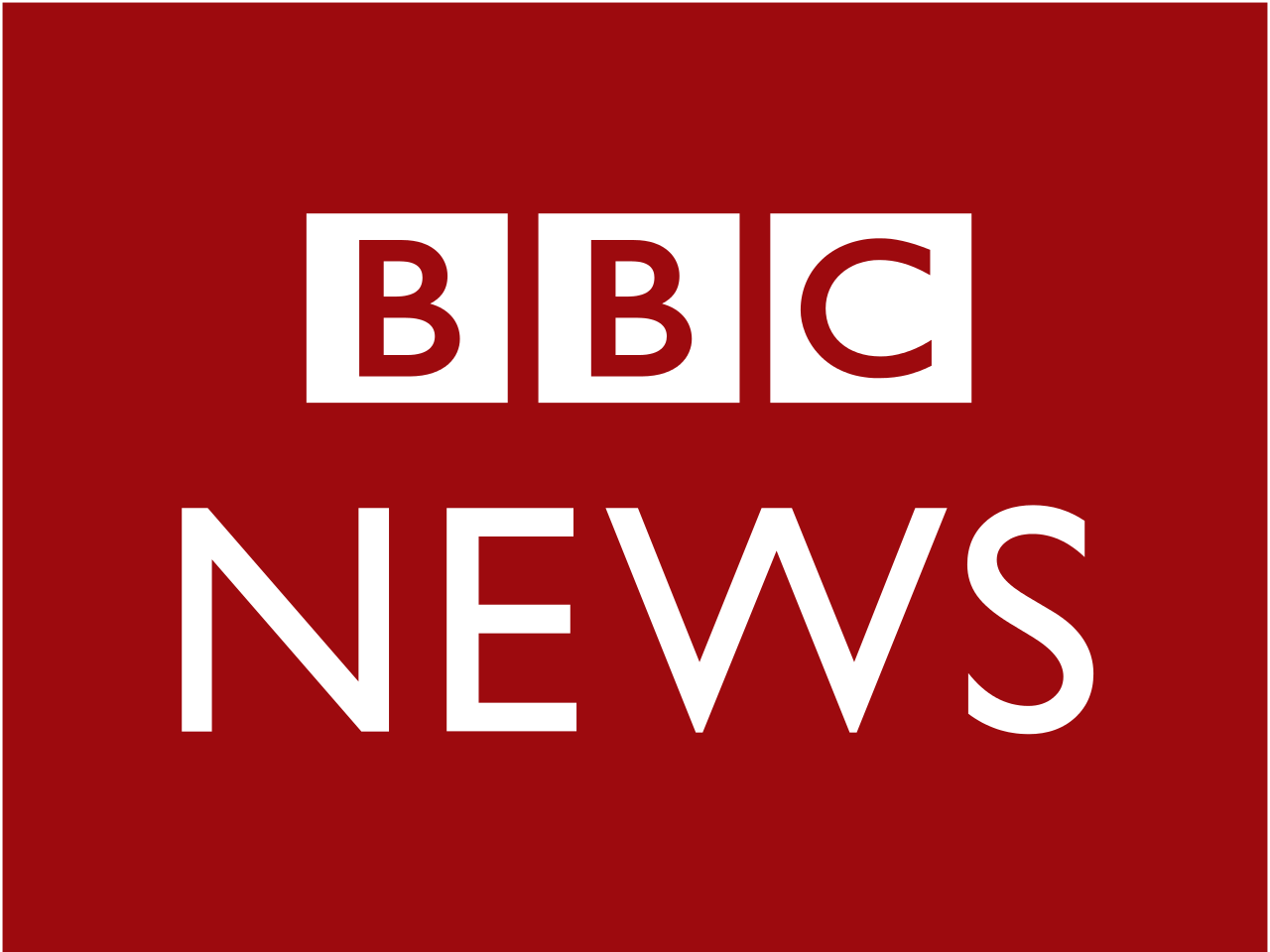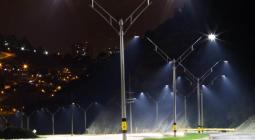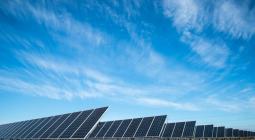Why LEDs haven't yet cut energy use for lighting

If you want to sell a bicycle, light it up, says Eamon Barrett, owner of the Altitude bike shop in Waterford, Ireland. The glossy technicolour paints, the chrome, the shiny new spokes - they all glisten in bright light.
But having fluorescent bulbs blazing all day long to help shift a supposedly green form of transport began to bother Mr Barrett. So, around three years ago, he decided to switch to more efficient LED lighting in Altitude's showroom and also the workshop, canteen and back offices.
Motion sensors mean lights in some areas now only come on when someone enters the room. The system is powered partly by new solar panels and a battery.
"It's a win-win," says Mr Barrett. "The quality of the lighting is better." And, he says, his annual electricity bill has fallen by 35%. That saving would be even greater, adds Mr Barrett, were it not for Russia's invasion of Ukraine, which dramatically pushed up energy prices.
 IMAGE SOURCE,ALTITUDE
IMAGE SOURCE,ALTITUDE
Eamon Barrett spent thousands of euros upgrading the lighting at his bike shop
LED lighting has been around for decades but many businesses are yet to install it. That's partly down to the upfront cost of a switchover. Mr Barrett says he spent roughly €10,000 (£8,800; $10,900) on new lighting across his 6-7,000 sq ft property. He estimates that it will take around seven years to recoup this as well as the additional cost of the solar panels and battery.
Last year, LEDs hit a milestone. They made up 50% of lighting sales globally, according to the International Energy Agency. However, because more people around the world are installing electrically-powered lighting than ever before, the total energy consumed by lighting is actually going up. The latest LEDs are ultra-efficient - but we probably need to do more to ensure that lighting doesn't end up using more energy overall.
"The number of lights used in each household is increasing," says Shivika Mittal at Imperial College London's Grantham Institute. "That is offsetting switching to LED."
She says many residential properties, particularly in the West, have already adopted LEDs. But the transition is taking longer in commercial buildings. Government policies could help encourage businesses to switch. And further energy savings can be made, she adds, when lighting is paired with smart systems, such as the motion sensors used by Mr Barrett. That could help global energy consumption for lighting come down.
 IMAGE SOURCE,GETTY IMAGES
IMAGE SOURCE,GETTY IMAGES
LED lights now make up half of global lighting sales
Marmax Products in County Durham recycles plastic to make outdoor furniture such as picnic tables. Last year, the firm finally made the switch from incandescent bulbs to LED lighting in its warehouse and offices. "We felt that, because of our product range, we were doing our bit," says Dave Johnson, general manager. It was an energy reduction audit that flagged the possibility of moving to LED lighting. "You can always do more," adds Mr Johnson.
The efficiency of an electric light can be measured in terms of how many lumens (the quantity of visible light emitted) it produces per watt of energy consumed. In the early 2000s, white LEDs only offered around 20 lumens per watt, says Paul Scheidt, senior product marketing manager at Cree LED, a major lighting manufacturer.
In March, Cree LED announced white LEDs offering 228 lumens per watt. The vast majority of energy used by LEDs goes towards producing photons (light) whereas incandescent bulbs waste roughly 90% of the energy they consume as heat.
Mr Scheidt notes that for warm-toned LEDs, the efficiency drops somewhat, but it's still possible to achieve around 160 lumens per watt for warm white luminaires, with a colour temperature of 2,700 kelvin. Yet more improvements are expected, though. Dr Mittal says the efficiency of these lights could double within the next 20 years.
In some locations, simply replacing long-defunct lighting remains a challenge. Earlier this year, at the Stamford Hill Estate in London, lighting manufacturer Gemma Lighting was called in to recommend options for exterior and street lighting.
 IMAGE SOURCE,GEMMA LIGHTING
IMAGE SOURCE,GEMMA LIGHTING
Stamford Hill Estate in London recently switched to LED lights
"When we surveyed the site, only 10% of those original lights were still working. It created a lot of dark spots," says Piers Lowbridge, marketing manager. The old lights were high pressure sodium, or SON, lamps. Now all, more than 100 fittings, have been replaced with LEDs.
Annual energy consumption for the old lights - had they all been working - would have been 341,000 kilowatt hours (kWh), says Mr Lowbridge, which is enough to meet the annual electricity demands of more than 120 average British homes. The new LEDs require just 36,000 kWh annually, a reduction of nearly 90%.
And although the switchover cost £34,500, the old lamps - again, had they all been functional - would have cost £115,000 per year to run including maintenance overheads, according to Gemma Lighting.
The company has also just announced a standalone solar-powered street light that does not need to be connected to the grid. It comes equipped with a light sensor so that it only turns on when it is dark outside, and also a motion sensor. This allows the light fitting to increase its brightness from 30% to 100% whenever a vehicle or person passes by.

One problem with LEDs is that the blue light they emit has been linked to health issues such as disrupted sleep and various diseases. Blue light is emitted to some extent even by warm-toned luminaires. Dr Karolina Zielińska-Dąbkowska at Gdańsk University of Technology says our eyes have photoreceptors that are particularly sensitive to blue.
"As a practising lighting designer and researcher, I think the only way is LEDs but they still need improvement," she says. LED lighting installations are also sometimes criticised for being excessively bright.
Mr Scheidt says that, for years, lighting installers made the mistake of choosing luminaires with "too much blue" in them but that is now changing.
LEDs are clearly growing in popularity. If installed judiciously, they can help businesses make big financial savings, emphasises Mr Barrett, who now notices less efficient lighting - and the wasted heat it gives off - when he's out and about.
"If you've got any kind of a large retail space and you're running old lighting, honestly, at this point, you're just wasting money," he says.





